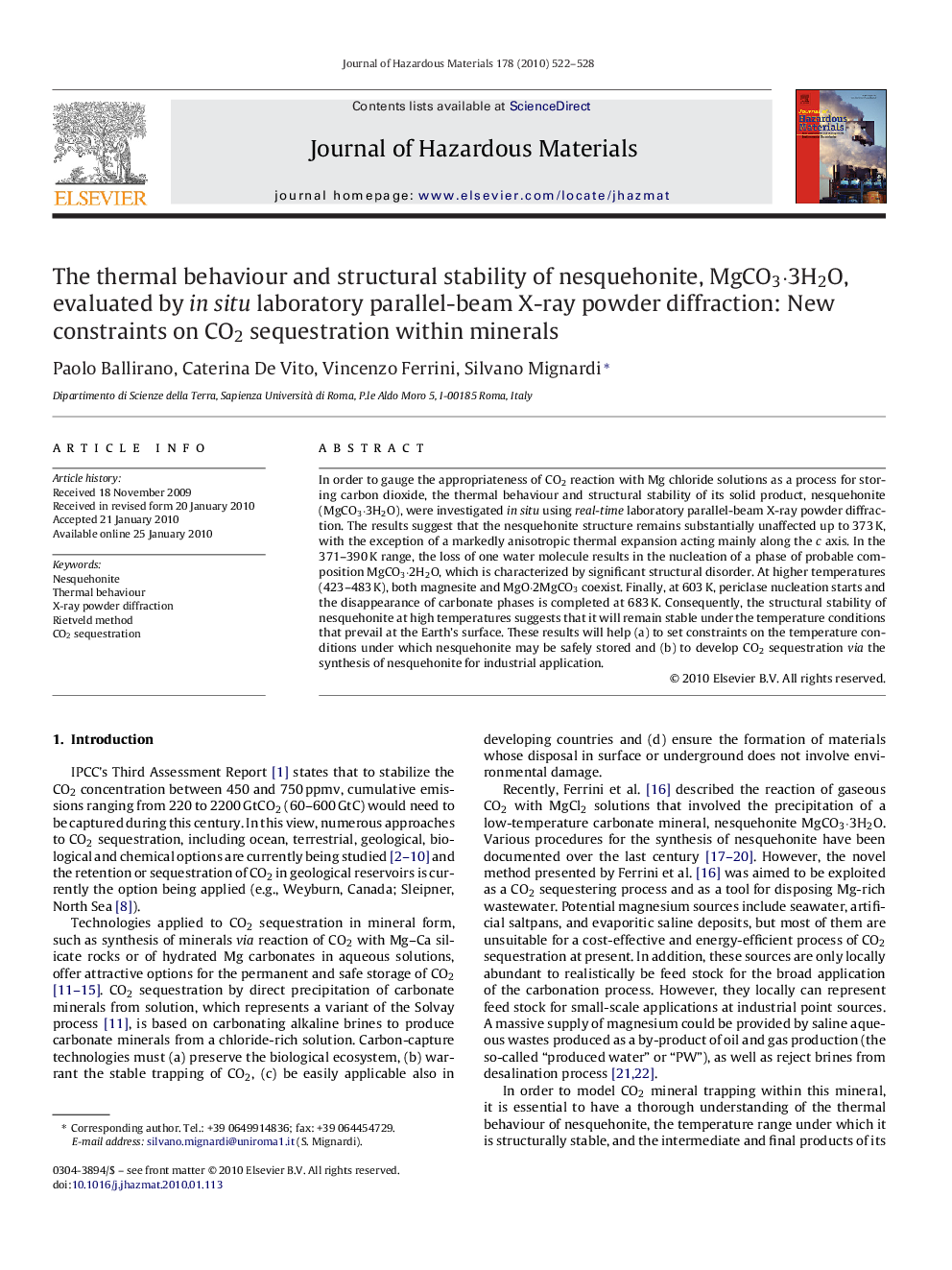| Article ID | Journal | Published Year | Pages | File Type |
|---|---|---|---|---|
| 580295 | Journal of Hazardous Materials | 2010 | 7 Pages |
Abstract
In order to gauge the appropriateness of CO2 reaction with Mg chloride solutions as a process for storing carbon dioxide, the thermal behaviour and structural stability of its solid product, nesquehonite (MgCO3·3H2O), were investigated in situ using real-time laboratory parallel-beam X-ray powder diffraction. The results suggest that the nesquehonite structure remains substantially unaffected up to 373 K, with the exception of a markedly anisotropic thermal expansion acting mainly along the c axis. In the 371-390 K range, the loss of one water molecule results in the nucleation of a phase of probable composition MgCO3·2H2O, which is characterized by significant structural disorder. At higher temperatures (423-483 K), both magnesite and MgO·2MgCO3 coexist. Finally, at 603 K, periclase nucleation starts and the disappearance of carbonate phases is completed at 683 K. Consequently, the structural stability of nesquehonite at high temperatures suggests that it will remain stable under the temperature conditions that prevail at the Earth's surface. These results will help (a) to set constraints on the temperature conditions under which nesquehonite may be safely stored and (b) to develop CO2 sequestration via the synthesis of nesquehonite for industrial application.
Related Topics
Physical Sciences and Engineering
Chemical Engineering
Chemical Health and Safety
Authors
Paolo Ballirano, Caterina De Vito, Vincenzo Ferrini, Silvano Mignardi,
